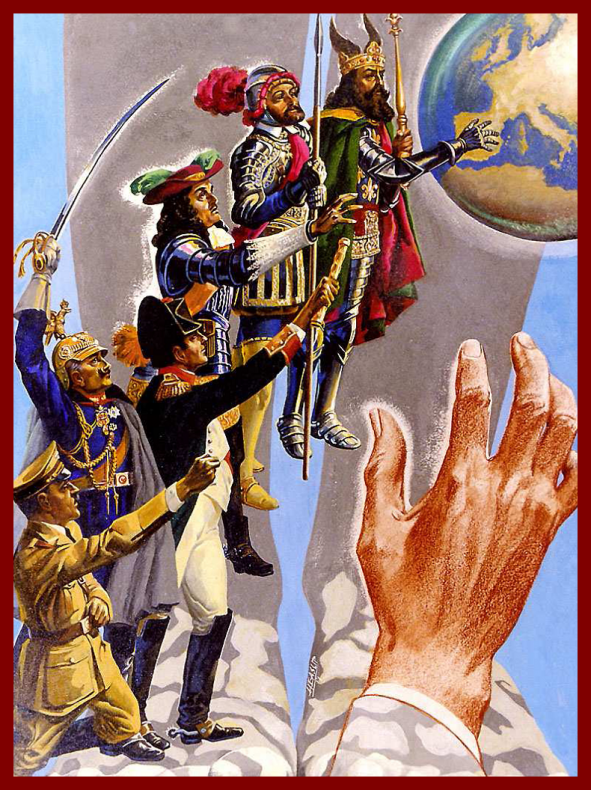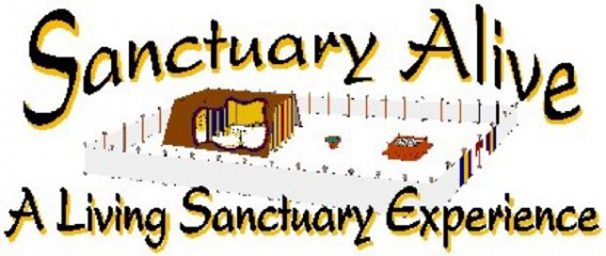Don Korenko

Introduction
Do you look around today and wonder what is happening to our world? Is this world going to self-destruct? If so, will it be soon? Or, as some say, will everything calm down and we will have a thousand years of peace?
Believe it or not, what is happening around us today is part of a plan that was put in place about 6,000 years ago. And, according to that plan, this world will be destroyed in the not so distant future. But what about us? What will happen to us?
I know, you’re saying that this is all a bunch of religious fairy-tales, made up to satisfy weak-minded people and those who don’t know any better. BUT….what if I could PROVE to you that this was for real and not a bunch of religious myths?
What If?
What if you met a person on the street and they told you that a certain event was going to happen to you and it did? You would call that a coincidence. Now suppose that you saw that same person again and they told you about another event, and that happened. Now, you’re getting a little
freaked-out. But what if this happened four or five more times? Where would you go to find out more? Obviously back to the same person.

Never Been Wrong
The Bible is just like that person in that it has been telling us what is going to happen, years before it happens,AND IT HAS NEVER BEEN WRONG! In all the religions in the world, there is ONLY ONE that can make this claim, and that religion is Christianity. NO OTHER RELIGION OR DOCUMENT has the prophecies that can be found in the Bible, AND ALMOST ALL OF THEM HAVE COME TRUE!! What about the ones that didn’t come true? They will, because their time is still in the future.
“Well, anybody can twist Bible texts to prove what they’re trying to prove.” That’s true. That’s why we have so many churches and you will see later in the lessons why this is true. But God made the Bible to explain itself. You don’t need fancy commentaries or a doctoral degree in theology to understand the Bible. The message of the Bible is so profound that theologians can argue forever, but a child can read it and understand. What most people need is some direction or help in knowing where to go.
“But, I Don’t Believe in the Bible.”
Lesson One will try to provide SOLID EVIDENCE that proves the Bible to be true. Lesson One is designed to give you some comfort as to the authenticity of the Bible. The rest of the Bible studies will continue to reinforce and to build on what you learn in Lesson One.
The War Between God And Satan Supported By History
This booklet guides you though a set of Bible studies that are unique from a couple of perspectives. Most Bible studies focus on various aspects of different Bible doctrines, but in this booklet we are focusing on the war between God and Satan and how history confirms the Bible. Although it is important to know what the Bible teaches, WHAT YOU KNOW IS NOT GOING
TO SAVE YOU. It’s what you do with what you know!! Although we do touch on Bible doctrines, we put them into perspective with the underlying story and purpose of the Bible. We try to present these lessons like a story to make them interesting and easy to follow.
Do You Remember Your Favorite Movie?
Can you describe what happened in your favorite movie to a friend? What made the movie easy to remember and describe to someone else? It was because you remember the story. The storyline of the movie was presented in such a way as to make it easy to remember. By knowing the storyline of the movie you can remember how the various events of the story fit in with the entire movie.
It’s the same with the Bible. Most of us know that there is some type of a spiritual war going on but not everybody knows the underlying reasons for the war or the details of that war. How and why did it start, who started it, and how will it end? How does it affect me and why should I care?
Starting at lesson Two, these lessons will provide a storyline of the Bible starting at the beginning of the war, following it through the ages and seeing the final resolution. We will look at what the Bible has to say, and compare that to what has happened historically.
About This Document
These lessons are not intended to be a scholarly or an in-depth document but was written to proclaim the love of Jesus and to encourage the reader to a deeper study of the Bible. I do not apologize for the directness of this presentation. The stakes are too high to beat around the bush. Some of the material is not popular but is completely biblical. Too many people today are preaching a watered-down message that is designed to keep people happy. I do not wish to be one of those standing in the judgment before God and being accused of not presenting the straight truths of the Bible. I pray that you will see the love of God in each one of these lessons. He is reaching out to every person and wants every one of us to be saved. But He won’t force your decision. I pray your decision will be to follow God.
Many sources were used (but not copied unless identified) and the reader is encouraged to follow up on the additional reading. I’ve attempted to be as accurate as possible in presenting this material, and any errors found, or constructive criticism offered, will be welcomed by the author at the e-mail inside the front cover.
Suggested Resources
1. A Bible. You can use any version you wish although for study purposes, some versions are preferable to others. I have used the King James Version in this booklet as it is in the public domain.
2. A computerized study Bible such as E-sword or The Word. These Bibles are completely free and can be downloaded to your computer. These include a tremendous number of free resources such as commentaries, dictionaries, concordances, Greek and Hebrew lexicons and historical books from authors such as Josephus, Edersheim, etc. The only resource required is time to download each resource. Just GOOGLE them and you will find them.
3. The Internet. Although Wikipedia is not a scholarly resource, the information it provides is more than adequate for our purposes. There are many good articles on history, people, the reformation, theology, etc., that will shed light on our studies.
4. A good commentary such as Barnes, Gill, Jamieson Fausset Brown, Keil & Delitzsch, or Matthew Henry, etc. These are all available for free with the above software. These can provide another viewpoint on the verse in question
A note of caution on commentaries; these are the result of personal study and are the interpretations of the respective authors. These older commentaries are highly preferred over the newer commentaries or Bible notes for reasons that will be explained in lesson 5.
5. Greek-Hebrew Lexicon. This is free with the software in 2. above. By moving your mouse over a particular word, the Greek or Hebrew word is shown along with the original meaning of the word. That helps you see for yourself whether the translators were true to the original meaning. Translators can change the meaning of a verse by using a different word form or alternate meaning of the word in the original.
